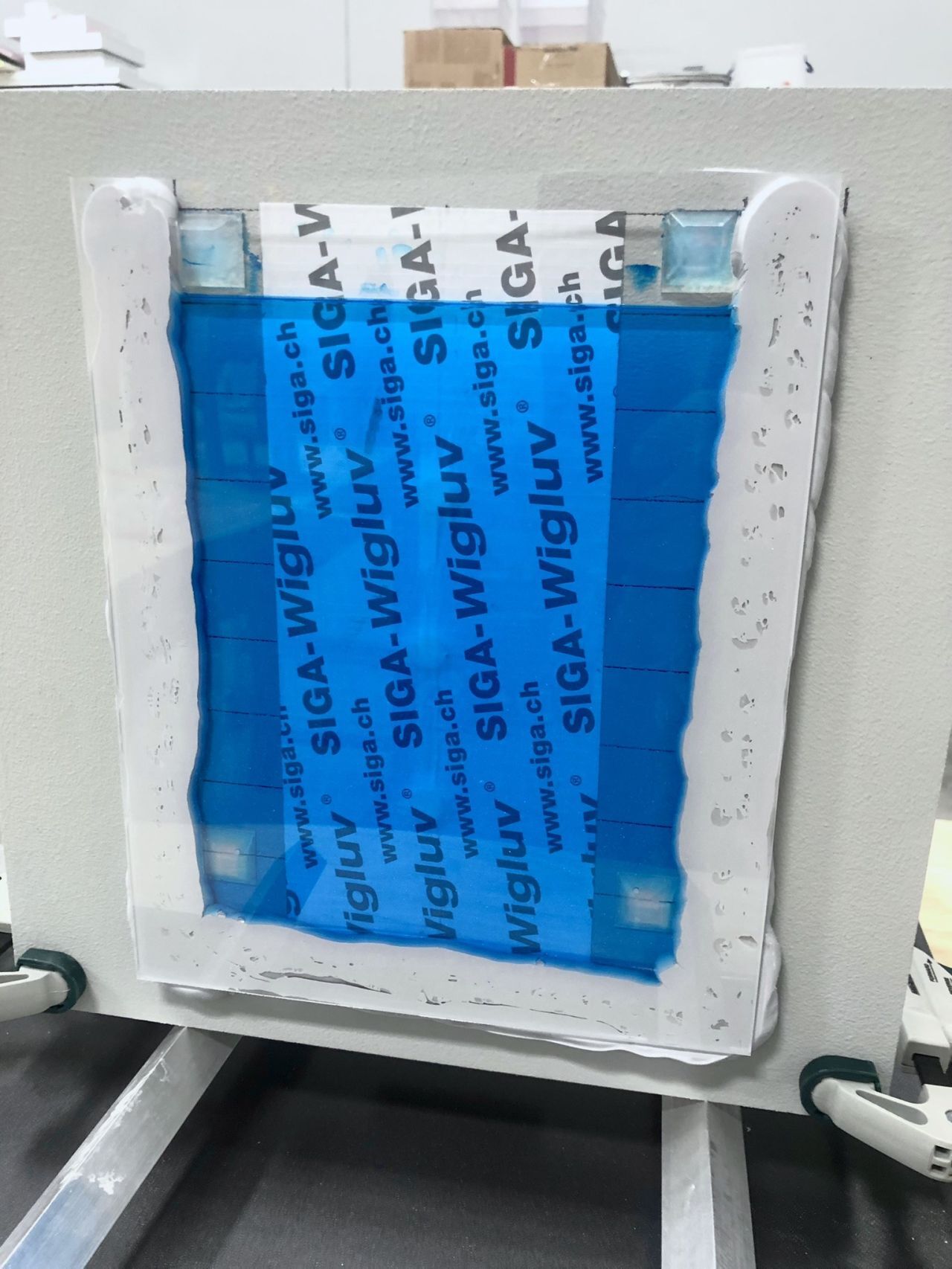Tags: #buildingmaterials #buildingproducts #buildingscience #materialsscience #roguetesting #tape





The very purpose of tapes and liquid flashing isn’t assessed by standard test methods. Let that seep in for a moment.
The singular purpose of tapes and liquid flashing is to seal interfaces. This is called edge sealing. The intent is to seal against air and water – the latter presenting the greater challenge. Somewhere along the way, adhesion (i.e. peel resistance) became the de facto analog for edge sealing. The logic here: if it adheres well, it seals well. But this isn’t entirely true.
I can offer many examples of products that ‘pass’ AAMA 711 and 714 but provide relatively poor edge sealing. More specifically, post-immersion peel resistance of 1.5 pli (tapes) or 5 pli (liquid flashings) may be easily achieved by products that leak at their perimeter edges. The culprit is seal discontinuity, not adhesion per se. The reasons are many and varied.
The solution? Evaluate true edge sealing – with water. And do so using real world substrates.